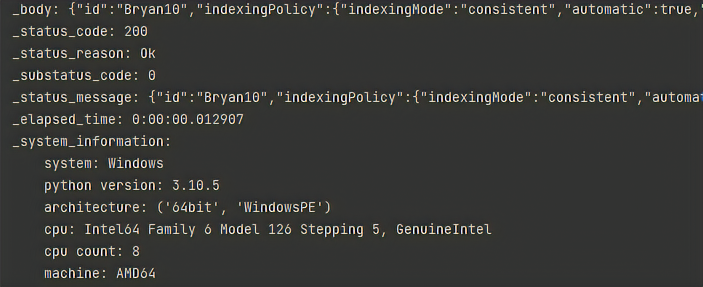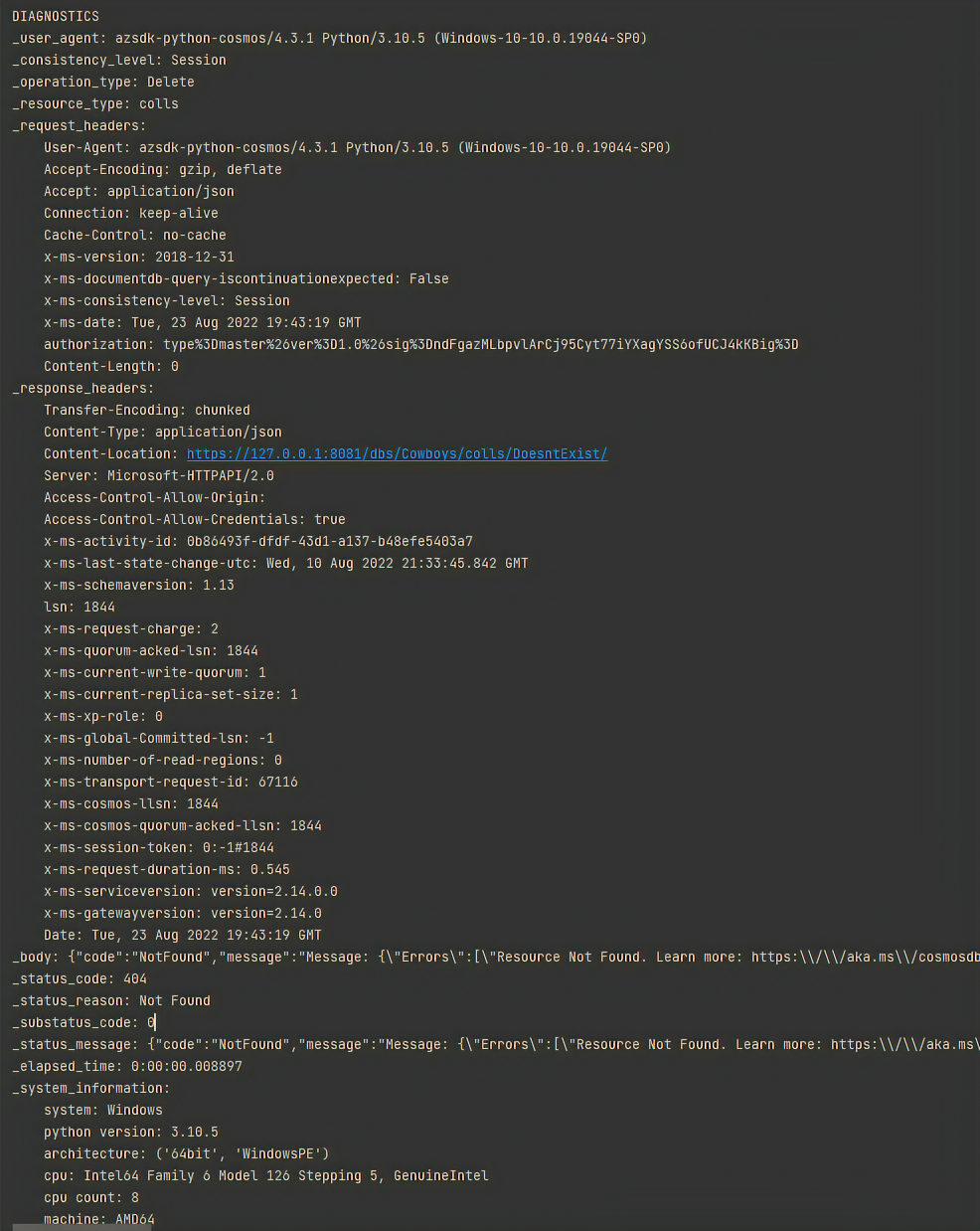azure-sdk-for-python
 azure-sdk-for-python copied to clipboard
azure-sdk-for-python copied to clipboard
Draft Code for cosmos diagnostics
Description
Adds cosmos diagnostics to help leverage information for troubleshooting issues that clients might have.
If an SDK is being regenerated based on a new swagger spec, a link to the pull request containing these swagger spec changes has been included above.
All SDK Contribution checklist:
- [ ] The pull request does not introduce [breaking changes]
- [ ] CHANGELOG is updated for new features, bug fixes or other significant changes.
- [ ] I have read the contribution guidelines.
General Guidelines and Best Practices
- [ ] Title of the pull request is clear and informative.
- [ ] There are a small number of commits, each of which have an informative message. This means that previously merged commits do not appear in the history of the PR. For more information on cleaning up the commits in your PR, see this page.
Testing Guidelines
- [ ] Pull request includes test coverage for the included changes.
Thank you for your contribution bambriz! We will review the pull request and get back to you soon.
Please put the whole request diagnostic string in the PR description.
I added the full text of the response that corresponds to its respective image.
@bambriz - we should avoid having response body as part of successful request diagnostics. Since the response body is already part of the response, and users can access it directly, it doesn't make sense to include it in the diagnostics. However, in exception cases, it is totally okay to have the body, since the response body which comes from gateway has useful .Net diagnostics information in it.
For example, for this diagnostics sample, having body doesn't make sense:

And actually for requests that end up in exceptions, we should not call the field body, rather exceptionMessage (which should be only present when the exception occurs, and should be absent in case of successful requests):

Also, can you please attach the contract of the Diagnostics object? (basically all the fields that it will have and the information that those fields will contain).
This isn't the full diagnostic story. Please refer to Java or .Net's implementation.
Could you elaborate for me what you mean by the full diagnostic story? I am unsure what you mean by that.
@bambriz - we should avoid having response body as part of successful request diagnostics. Since the response body is already part of the response, and users can access it directly, it doesn't make sense to include it in the diagnostics. However, in exception cases, it is totally okay to have the body, since the response body which comes from gateway has useful .Net diagnostics information in it.
For example, for this diagnostics sample, having body doesn't make sense:
And actually for requests that end up in exceptions, we should not call the field
body, ratherexceptionMessage(which should be only present when the exception occurs, and should be absent in case of successful requests):Also, can you please attach the contract of the Diagnostics object? (basically all the fields that it will have and the information that those fields will contain).
I should be able to do this. I will also attach the diagnostic object contract once I make these changes.
This pull request is protected by Check Enforcer.
What is Check Enforcer?
Check Enforcer helps ensure all pull requests are covered by at least one check-run (typically an Azure Pipeline). When all check-runs associated with this pull request pass then Check Enforcer itself will pass.
Why am I getting this message?
You are getting this message because Check Enforcer did not detect any check-runs being associated with this pull request within five minutes. This may indicate that your pull request is not covered by any pipelines and so Check Enforcer is correctly blocking the pull request being merged.
What should I do now?
If the check-enforcer check-run is not passing and all other check-runs associated with this PR are passing (excluding license-cla) then you could try telling Check Enforcer to evaluate your pull request again. You can do this by adding a comment to this pull request as follows:
/check-enforcer evaluate
Typically evaulation only takes a few seconds. If you know that your pull request is not covered by a pipeline and this is expected you can override Check Enforcer using the following command:
/check-enforcer override
Note that using the override command triggers alerts so that follow-up investigations can occur (PRs still need to be approved as normal).
What if I am onboarding a new service?
Often, new services do not have validation pipelines associated with them, in order to bootstrap pipelines for a new service, you can issue the following command as a pull request comment:
/azp run prepare-pipelines
This will run a pipeline that analyzes the source tree and creates the pipelines necessary to build and validate your pull request. Once the pipeline has been created you can trigger the pipeline using the following comment:
/azp run python - [service] - ci
Closed PR since this is not the solution we're going with.